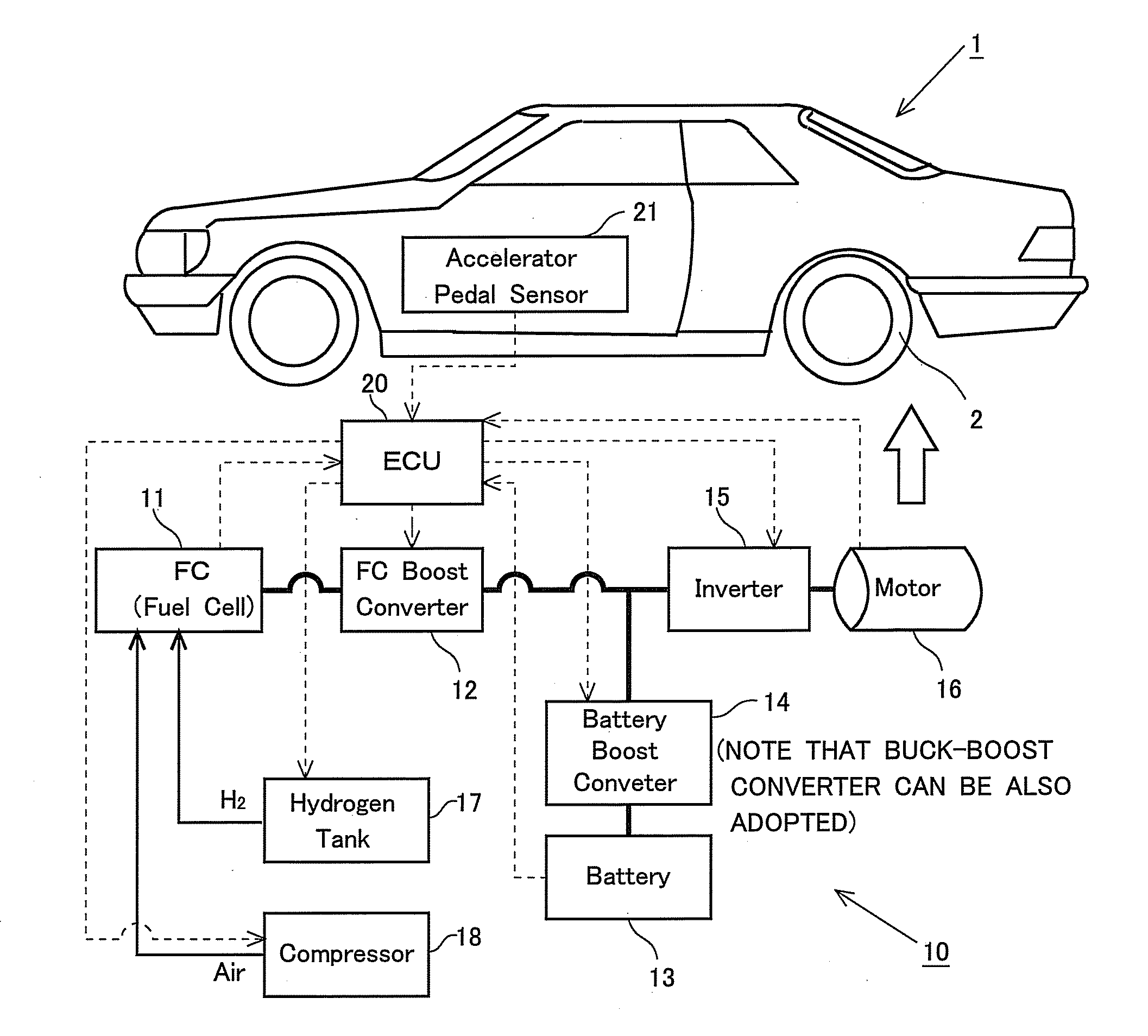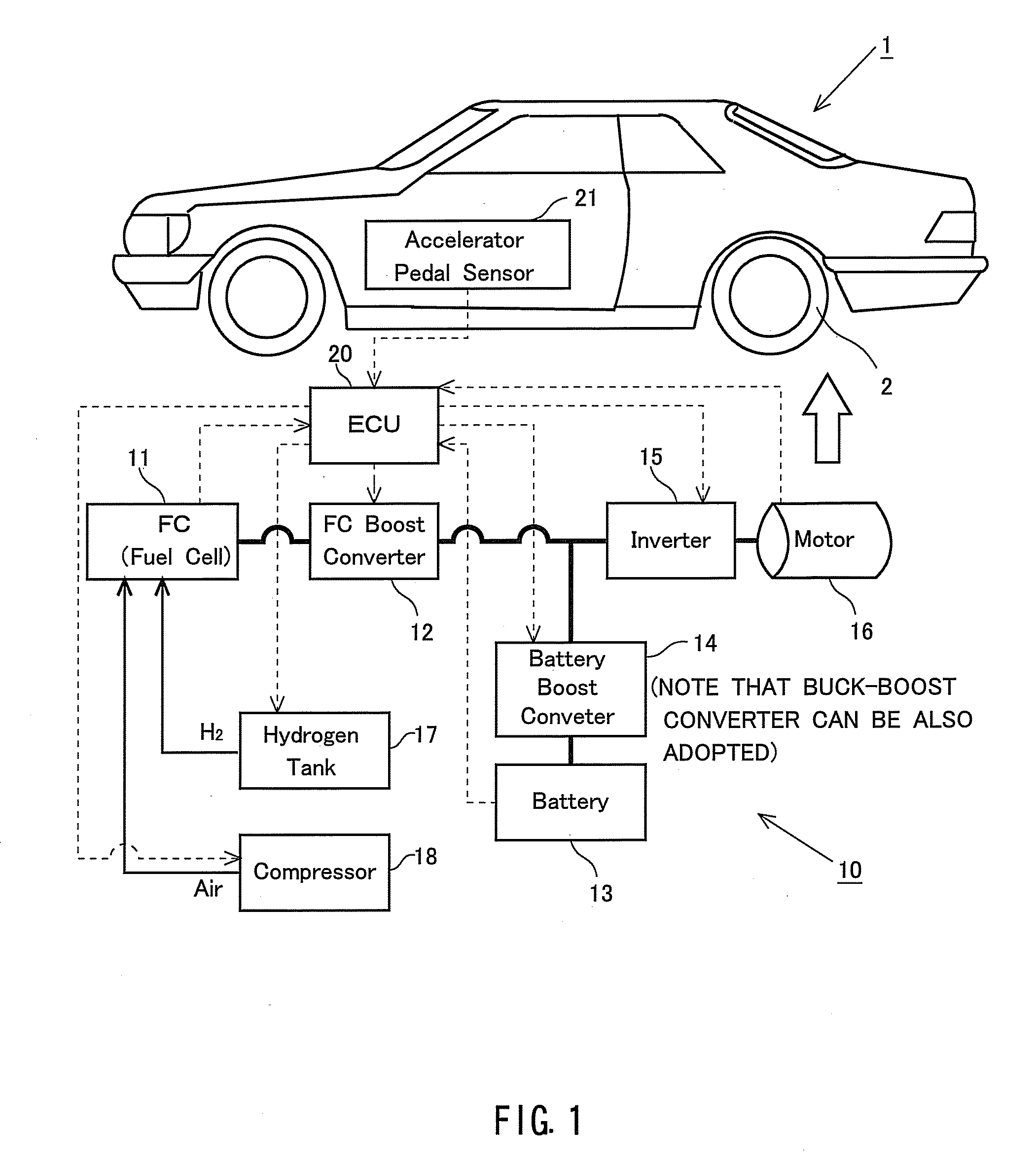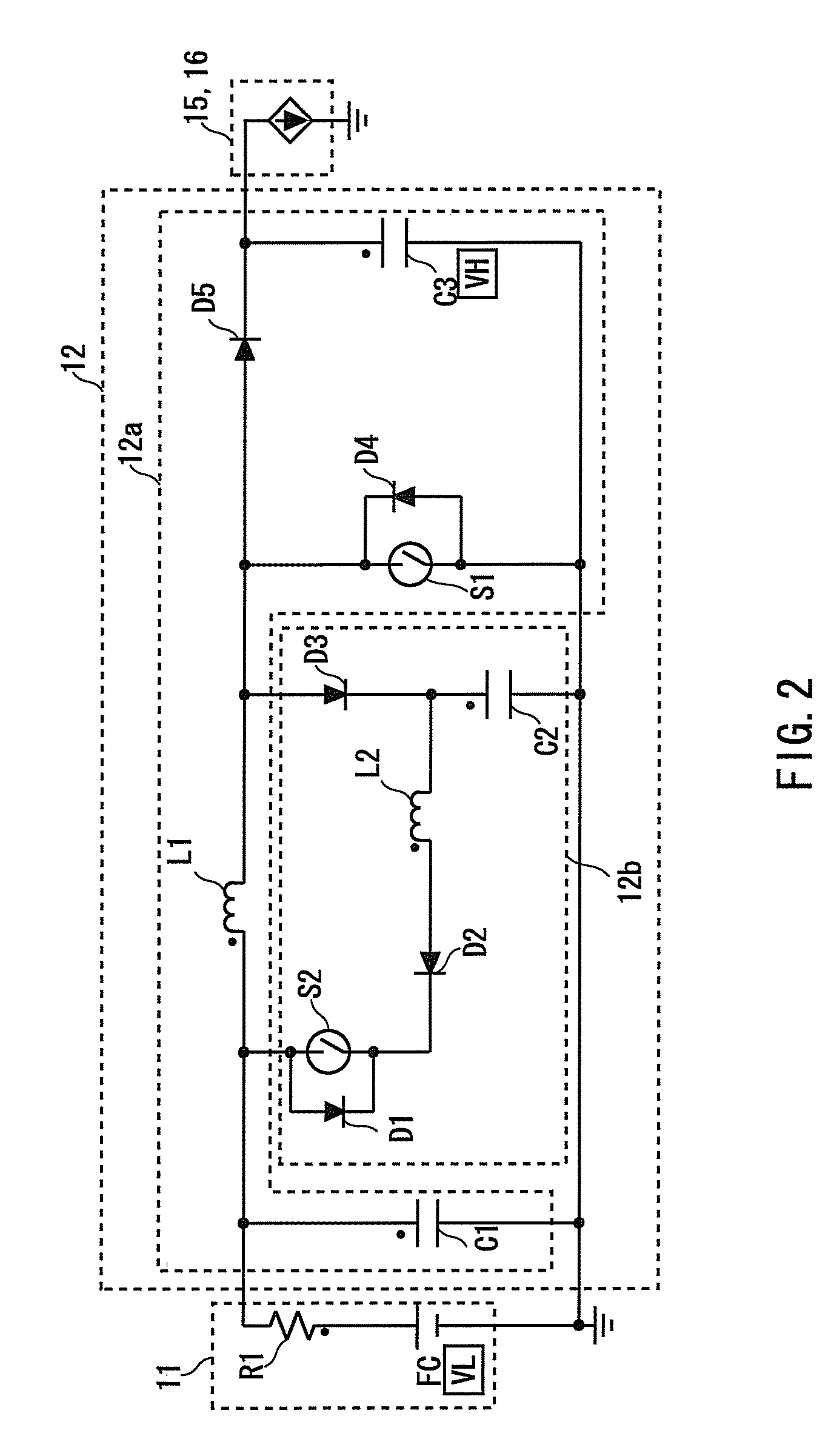Fuel cell system
a fuel cell and system technology, applied in the direction of electric energy management, feeding apparatus, dc source parallel operation, etc., can solve the problem of reducing the output electric power, and achieve the effect of reducing the efficiency of the fuel cell system and restraining the loss of switching
- Summary
- Abstract
- Description
- Claims
- Application Information
AI Technical Summary
Benefits of technology
Problems solved by technology
Method used
Image
Examples
first working example
[0104]FIG. 1 schematically illustrates an outline of a configuration of the fuel cell system 10 according to the present invention and the vehicle 1 of the movable body of which a drive source is the electric power supplied from the fuel cell system 10. Drive wheels 2 are driven by the drive motor (which will hereinafter simply be referred to as the [motor]) 16, whereby the vehicle 1 drives itself and thus gets movable. This motor 16 is a so-called three-phase AC (Alternating Current) motor and supplied with AC power from an inverter 15. Further, this inverter 15 is supplied with DC (Direct Current) power from a fuel cell (which is also abbreviated to [FC]) 11 defined as a main power source of the fuel cell system 10 and from a battery 13 defined as a secondary battery, and the supplied DC power is converted into the alternating current (AC) by the inverter 15.
[0105]Herein, the fuel cell 11 generates the electricity with electrochemical reaction between a hydrogen gas reserved in a ...
second working example
[0155]A second working example of the fuel cell system 10 according to the present invention will be discussed. One example of how the FC boost converter 12 is controlled in order to enhance the efficiency of the fuel cell system 10 will be described based on FIG. 11B. The FC boost converter control shown in FIG. 11B is executed when the ECU 20 supplies the motor 16 with the electric power generated by the fuel cell 11. Processes S501-S504 in the FC boost converter control shown in FIG. 11B are the same as the processes S201-S204 in the FC boost converter control shown in FIG. 11A, and hence their descriptions are herein omitted. When a process in the process S504 in the FC boost converter control shown in FIG. 11B is terminated, the operation proceeds to S505.
[0156]In S505, the output voltage of the fuel cell 11 is calculated based on the output of the fuel cell 11 (which will hereinafter be simply referred to as the FC output). The FC output is calculated according to the formula ...
first modified example
[0165]Moreover, it is preferable that the converting efficiency of the inverter 15 and the efficiency of actuating the motor 16 are taken into consideration with respect to applying the voltage to the inverter 15 for actuating the motor 16. For example, as explained in the first working example and the second working example given above, when supplying the power to the motor 16 from the fuel cell 11, the FC boost converter 12 is not sopped, in which case the voltage applied to the inverter 15 is boosted by the FC boost converter 12. In the first modified example, the voltage applied to the inverter is determined from a map in which the efficiency characteristic of the loads including the inverter 15 and the motor 16 is associated with the voltage applied to the inverter 15 on the basis of the request torque and the number of revolutions of the motor 16. Then, with the boost operation of the FC boost converter 12, the output voltage of the fuel cell 11 is boosted up to the thus-deter...
PUM
| Property | Measurement | Unit |
|---|---|---|
| current | aaaaa | aaaaa |
| speed | aaaaa | aaaaa |
| voltage | aaaaa | aaaaa |
Abstract
Description
Claims
Application Information
 Login to View More
Login to View More - R&D
- Intellectual Property
- Life Sciences
- Materials
- Tech Scout
- Unparalleled Data Quality
- Higher Quality Content
- 60% Fewer Hallucinations
Browse by: Latest US Patents, China's latest patents, Technical Efficacy Thesaurus, Application Domain, Technology Topic, Popular Technical Reports.
© 2025 PatSnap. All rights reserved.Legal|Privacy policy|Modern Slavery Act Transparency Statement|Sitemap|About US| Contact US: help@patsnap.com



